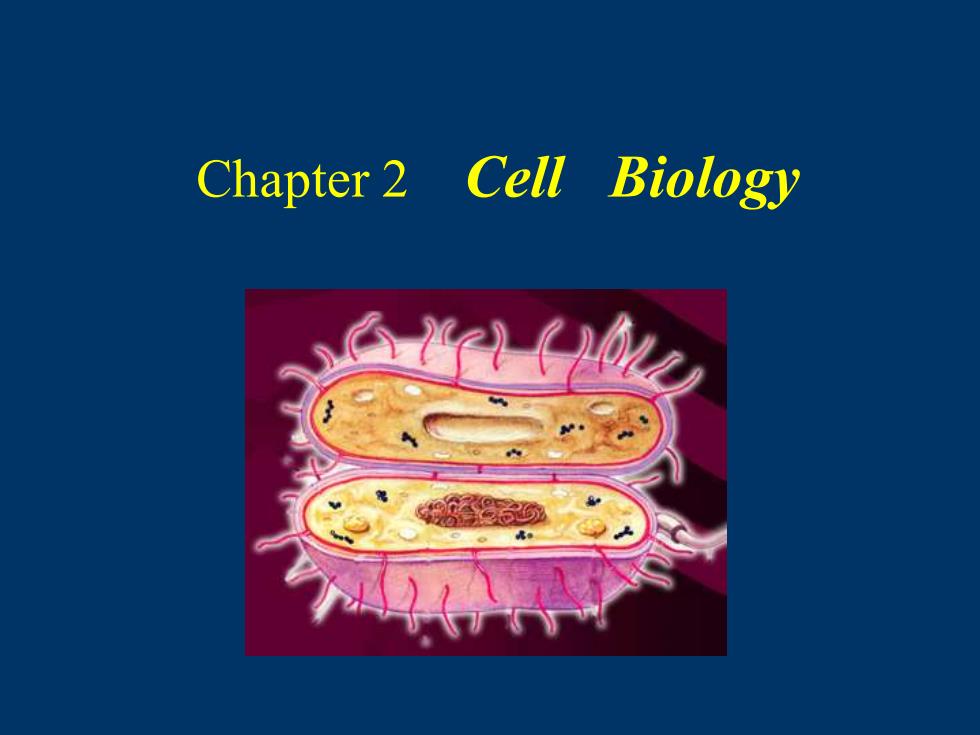
Chapter 2 Cell Biology
Chapter 2 Cell Biology
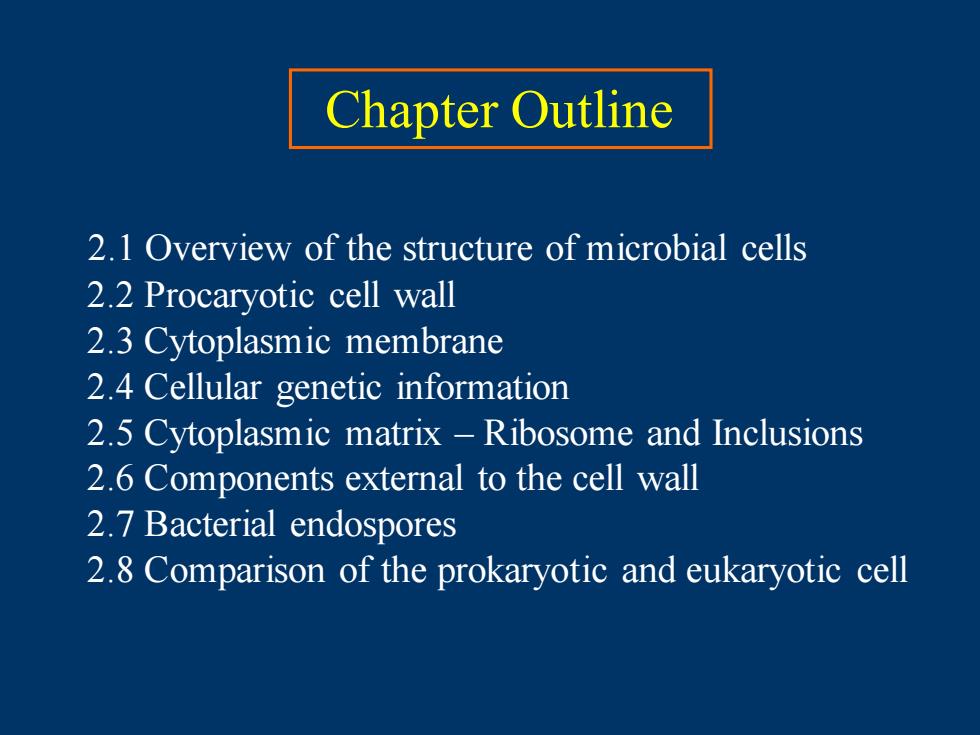
Chapter Outline 2.1 Overview of the structure of microbial cells 2.2 Procaryotic cell wall 2.3 Cytoplasmic membrane 2.4 Cellular genetic information 2.5 Cytoplasmic matrix -Ribosome and Inclusions 2.6 Components external to the cell wall 2.7 Bacterial endospores 2.8 Comparison of the prokaryotic and eukaryotic cell
2.1 Overview of the structure of microbial cells 2.2 Procaryotic cell wall 2.3 Cytoplasmic membrane 2.4 Cellular genetic information 2.5 Cytoplasmic matrix – Ribosome and Inclusions 2.6 Components external to the cell wall 2.7 Bacterial endospores 2.8 Comparison of the prokaryotic and eukaryotic cell Chapter Outline
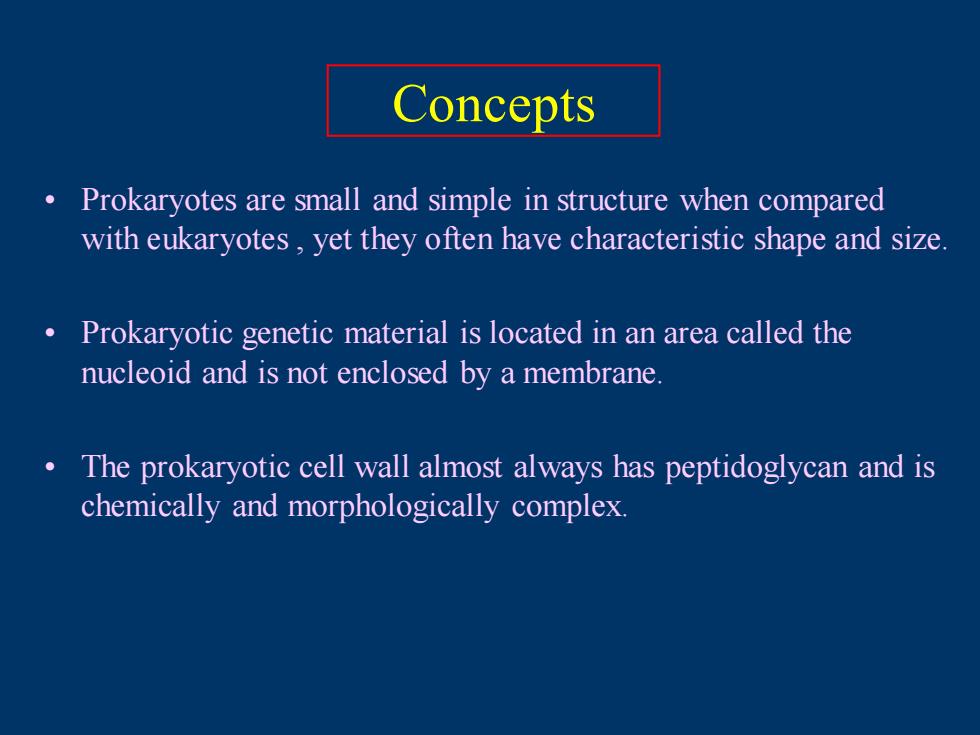
Concepts Prokaryotes are small and simple in structure when compared with eukaryotes,yet they often have characteristic shape and size. Prokaryotic genetic material is located in an area called the nucleoid and is not enclosed by a membrane. The prokaryotic cell wall almost always has peptidoglycan and is chemically and morphologically complex
Concepts • Prokaryotes are small and simple in structure when compared with eukaryotes , yet they often have characteristic shape and size. • Prokaryotic genetic material is located in an area called the nucleoid and is not enclosed by a membrane. • The prokaryotic cell wall almost always has peptidoglycan and is chemically and morphologically complex
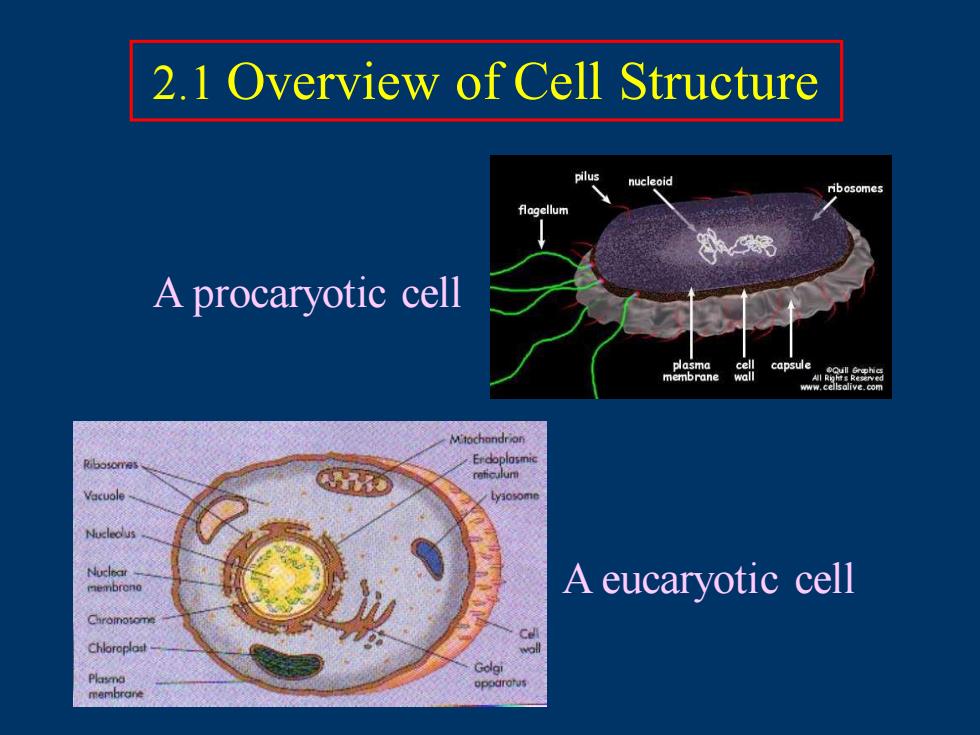
2.1 Overview of Cell Structure nucleoid A procaryotic cell A eucaryotic cell
A procaryotic cell A eucaryotic cell 2.1 Overview of Cell Structure
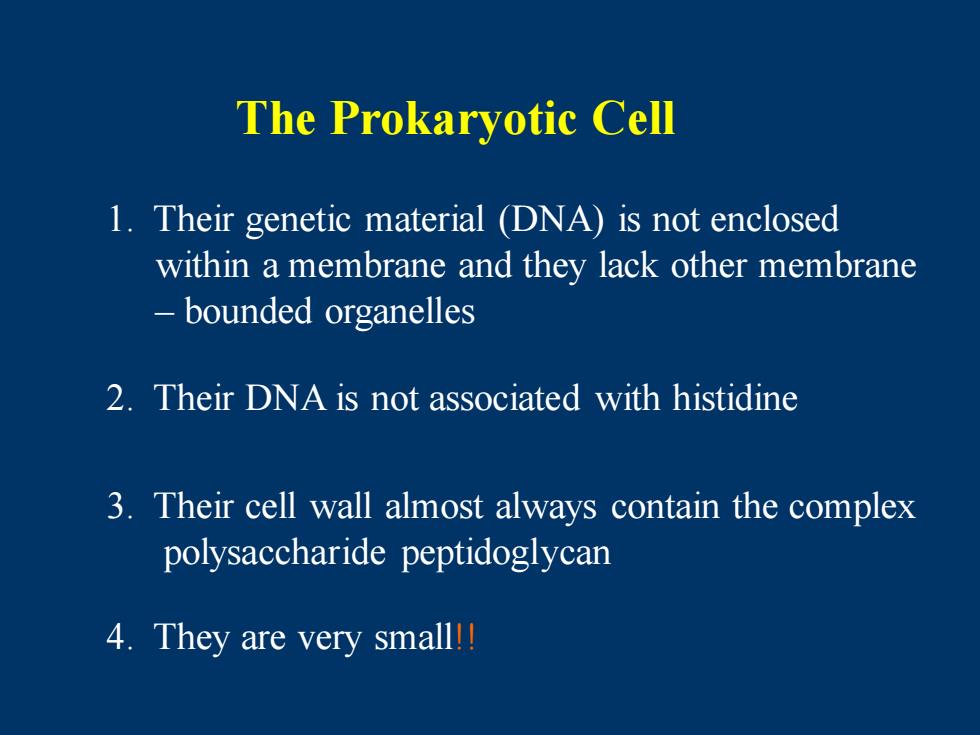
The Prokaryotic Cell 1.Their genetic material (DNA)is not enclosed within a membrane and they lack other membrane -bounded organelles 2.Their DNA is not associated with histidine 3.Their cell wall almost always contain the complex polysaccharide peptidoglycan 4.They are very small!!
3. Their cell wall almost always contain the complex polysaccharide peptidoglycan The Prokaryotic Cell 1. Their genetic material (DNA) is not enclosed within a membrane and they lack other membrane – bounded organelles 2. Their DNA is not associated with histidine 4. They are very small!!